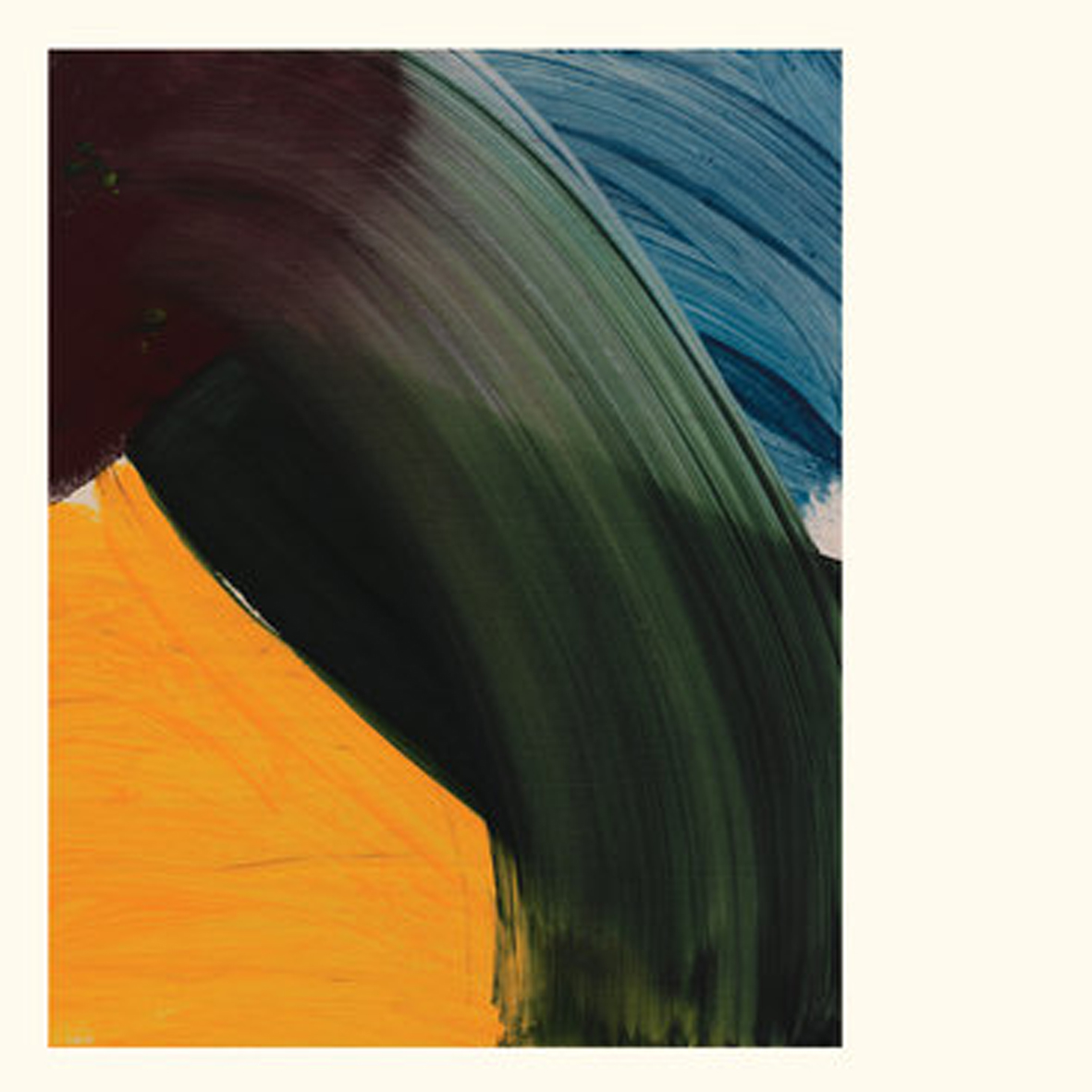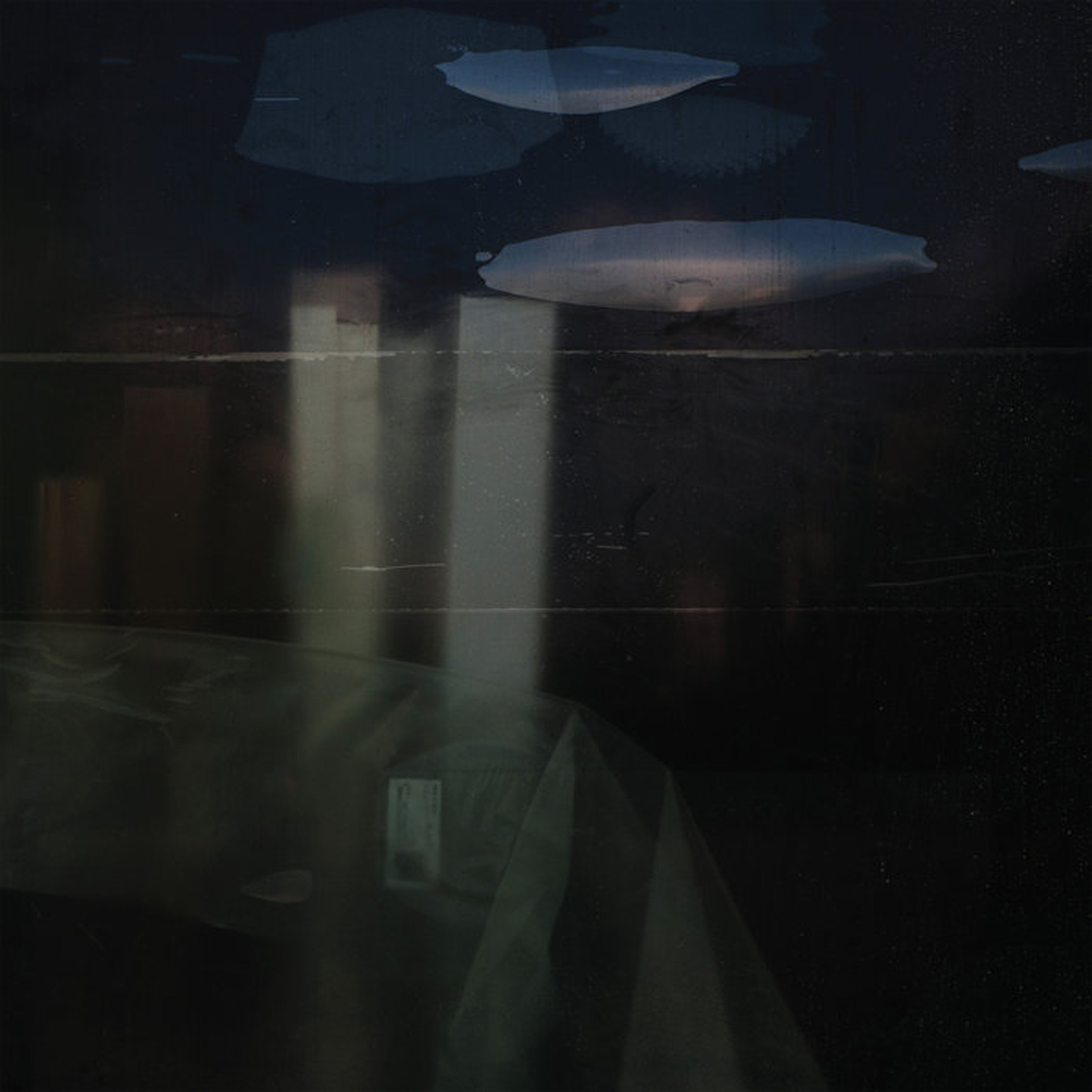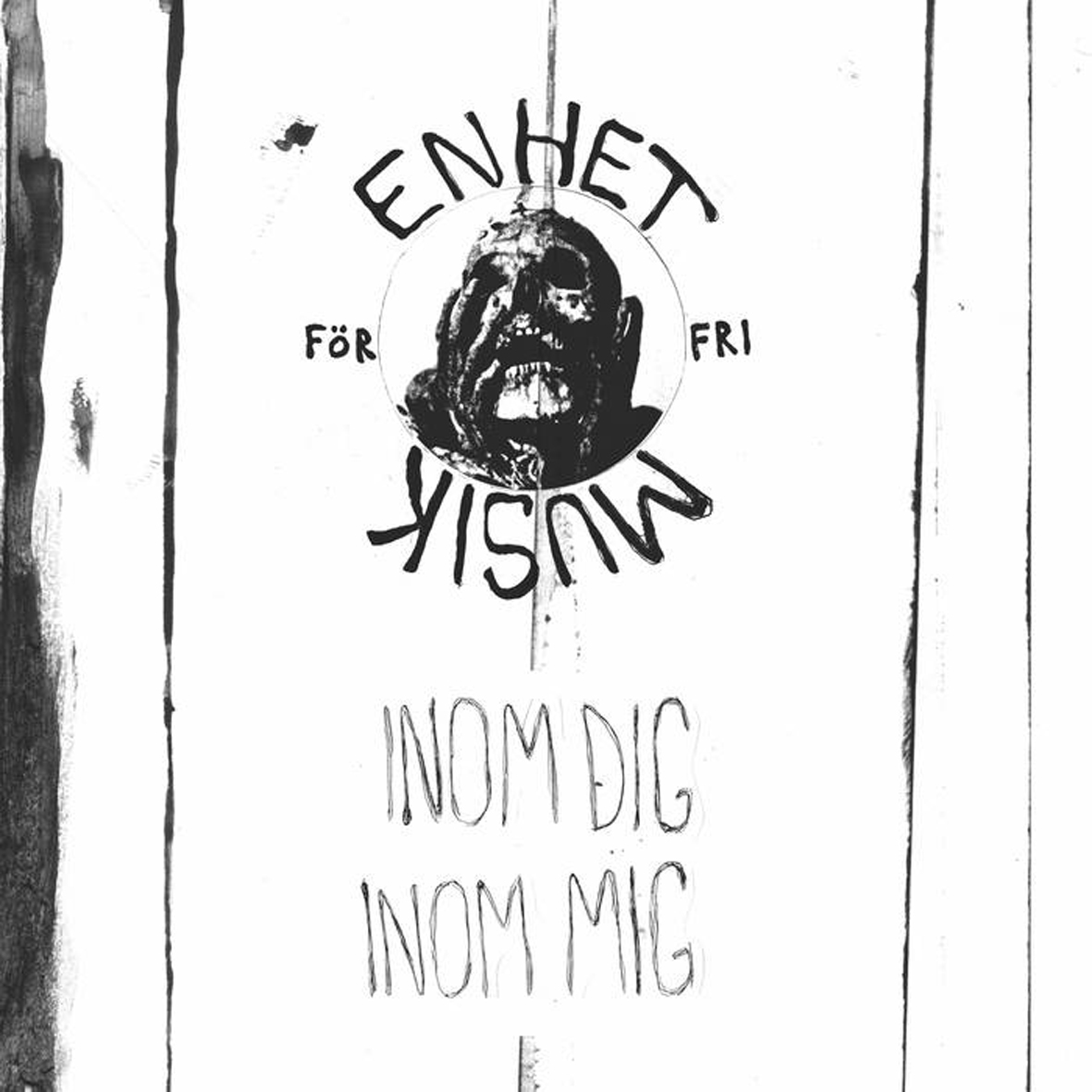 When I first heard the absolutely gorgeous lead single ("A Song of Summer") from On The Echoing Green, I started salivating immediately about the prospect of an entire album in that vein, as it seemed like Cantu-Ledesma had finally transformed his experimental guitar shimmer into pure dreampop/shoegaze heaven (a direction he had been headed for a while).  One thing I failed to fully register at the time, however, was that the delirious pop bliss of "A Song of Summer" was stretched out for a very un-pop eleven goddamn minutes.  That curious and arguably self-sabotaging decision more or less summarizes this entire release, as Echoing Green is not so much a dreamy and hook-filled pop masterpiece so much as it is yet another characteristically abstract and experimental guitar album from Jefre (albeit one with a handful of riffs and melodies that plenty of more accessible artists would happily kill for).  That said, the few fully formed songs capture Cantu-Ledesma at the absolute peak of his powers, even if Echoing Green as a whole falls shy of the lushly beautiful pop breakthrough that it could have been.
When I first heard the absolutely gorgeous lead single ("A Song of Summer") from On The Echoing Green, I started salivating immediately about the prospect of an entire album in that vein, as it seemed like Cantu-Ledesma had finally transformed his experimental guitar shimmer into pure dreampop/shoegaze heaven (a direction he had been headed for a while).  One thing I failed to fully register at the time, however, was that the delirious pop bliss of "A Song of Summer" was stretched out for a very un-pop eleven goddamn minutes.  That curious and arguably self-sabotaging decision more or less summarizes this entire release, as Echoing Green is not so much a dreamy and hook-filled pop masterpiece so much as it is yet another characteristically abstract and experimental guitar album from Jefre (albeit one with a handful of riffs and melodies that plenty of more accessible artists would happily kill for).  That said, the few fully formed songs capture Cantu-Ledesma at the absolute peak of his powers, even if Echoing Green as a whole falls shy of the lushly beautiful pop breakthrough that it could have been.
Two new shows just for you. We have squeezed out two extended release episodes for this weekend to get you through this week. They contain mostly new songs but there's also new issues from the vaults. The first show features music from Rider/Horse, Mint Field, Robert Aiki Aubrey Lowe, Anastasia Coope, ISAN, Stone Music, La Securite, Bark Psychosis, Jon Rose, Master Wilburn Burchette, Umberto, Wand, Tim Koh, Sun An, and Memory Drawings. The second episode has music by Laibach, Melt-Banana, Chuck Johnson, X, K. Yoshimatsu, Dorothy Carter, Pavel Milyakov, Violence Gratuite, Mark Templeton, Dummy, Endon, body / negative, Midwife, Alberto Boccardi, Divine. Cow in Maui from Veronika in Vienna. Get involved: subscribe, review, rate, share with your friends, send images! |



 This digital-only sister release to And Right Lines Limit and Close All Bodies is a suite of comparatively simple, warm, and straightforward drone pieces, which presumably explains why its companion warranted a physical release while Scaleby did not.  That lack of fanfare makes sense, as Right Lines Limit is a far more complex and ambitious work that expands the limits of Skelton's vision while this release is merely nine variations on a theme firmly within his comfort zone.  I happen to be quite fond of that comfort zone though, as these bleary, churning reveries play much more to Skelton's strengths than some of his more cosmic, universe-chewing excursions of late.  While the recurring Inward Circles' theme of obfuscation is still in full effect (there are no recognizable stringed instruments to be found), Scaleby nonetheless carves out its own lovely niche of languorously vaporous, dreamlike beauty beneath a patina of shifting crackle, grit, and hiss.
This digital-only sister release to And Right Lines Limit and Close All Bodies is a suite of comparatively simple, warm, and straightforward drone pieces, which presumably explains why its companion warranted a physical release while Scaleby did not.  That lack of fanfare makes sense, as Right Lines Limit is a far more complex and ambitious work that expands the limits of Skelton's vision while this release is merely nine variations on a theme firmly within his comfort zone.  I happen to be quite fond of that comfort zone though, as these bleary, churning reveries play much more to Skelton's strengths than some of his more cosmic, universe-chewing excursions of late.  While the recurring Inward Circles' theme of obfuscation is still in full effect (there are no recognizable stringed instruments to be found), Scaleby nonetheless carves out its own lovely niche of languorously vaporous, dreamlike beauty beneath a patina of shifting crackle, grit, and hiss. While this latest album from the 10 person collective may feature only three of its members (Ezra Buchla, John Krausbauer, and Agnes Szelag, recorded in 2012), that reduced personnel is hardly perceptible from the sound. The subset trio create an unbroken noise squall of over 40 minutes that channels the best of truly minimalist compositions while at the same time it is reminiscent of the most chaotic (and therefore most amazing) of psych rock freakouts.
While this latest album from the 10 person collective may feature only three of its members (Ezra Buchla, John Krausbauer, and Agnes Szelag, recorded in 2012), that reduced personnel is hardly perceptible from the sound. The subset trio create an unbroken noise squall of over 40 minutes that channels the best of truly minimalist compositions while at the same time it is reminiscent of the most chaotic (and therefore most amazing) of psych rock freakouts. Daniel Menche's latest work is a bit daunting on paper: a three disc, three-plus hour work of 12 pieces, ranging between 10 and 25 minutes each. However, this is not the Menche of old, who was an adherent to that old school noise blast mentality that was so heavily the focus in the early days of the noise scene. Instead, there is rich variation and diversity on Sleeper, and the range of moods he creates is fitting the somnial implications of title, capturing the soundtrack to the most pleasant of dreams to the most terrifying of nightmares.
Daniel Menche's latest work is a bit daunting on paper: a three disc, three-plus hour work of 12 pieces, ranging between 10 and 25 minutes each. However, this is not the Menche of old, who was an adherent to that old school noise blast mentality that was so heavily the focus in the early days of the noise scene. Instead, there is rich variation and diversity on Sleeper, and the range of moods he creates is fitting the somnial implications of title, capturing the soundtrack to the most pleasant of dreams to the most terrifying of nightmares. Svendsen's most recent work has been either in the form of concept-heavy improvised jazz performances (as Nakama) or as solo excursions that feature him bending his double bass in any possible way to make sounds the inventor never intended. Compared to that, Avin is a drastic departure. What is so drastic is that, with a cadre of Norwegian virtuosos, he has created a significantly more intimate, singer-songwriter type record that maintains his edge for the bizarre and experimentation, which is superficially "normal" but hides much strangeness.
Svendsen's most recent work has been either in the form of concept-heavy improvised jazz performances (as Nakama) or as solo excursions that feature him bending his double bass in any possible way to make sounds the inventor never intended. Compared to that, Avin is a drastic departure. What is so drastic is that, with a cadre of Norwegian virtuosos, he has created a significantly more intimate, singer-songwriter type record that maintains his edge for the bizarre and experimentation, which is superficially "normal" but hides much strangeness. This innovative collaboration between Telefon Tel Aviv's Joshua Eustis and Belong's Turk Dietrich picks up right where the eponymous 2016 release left off, as the duo continue to gleefully pick apart and stretch minimal dub-techno into splintered unrecognizability.  As such, it would be quite a leap to describe S/W as dance music: all of the expected elements are present, but Second Woman reduce beats to skittering, stuttering abstraction.  The overall effect is quite a dynamically compelling one, ambitiously marrying an erratically sputtering and chopped-up synth haze with understated beats that seem equally inspired by skipping CDs, jackhammers, and ping-pong.  While some more hooks would certainly have been welcome, it is hard to grumble much about an album that sounds like it was sent from the future to show us what pop music for robots will be like.
This innovative collaboration between Telefon Tel Aviv's Joshua Eustis and Belong's Turk Dietrich picks up right where the eponymous 2016 release left off, as the duo continue to gleefully pick apart and stretch minimal dub-techno into splintered unrecognizability.  As such, it would be quite a leap to describe S/W as dance music: all of the expected elements are present, but Second Woman reduce beats to skittering, stuttering abstraction.  The overall effect is quite a dynamically compelling one, ambitiously marrying an erratically sputtering and chopped-up synth haze with understated beats that seem equally inspired by skipping CDs, jackhammers, and ping-pong.  While some more hooks would certainly have been welcome, it is hard to grumble much about an album that sounds like it was sent from the future to show us what pop music for robots will be like. For his Editions Mego debut, the singular and polymorphously creative Simon Fisher Turner takes a break from his soundtrack career for a feast of smaller and more experimental works.  While the fourteen individual pieces of Giraffe are thematically united by an overarching concept regarding the blending of "life" sounds with music and machines, that concept allows for quite a wide variety of moods and textures.  The clear centerpiece is a gorgeously woozy soundscape ("Slight Smile") featuring a mysterious monologue from Emma Smith that ultimately turns creepily garbled and digitized, but a few other pieces are similarly inspired.  Though many individual pieces err a bit too much on the side of brevity, Giraffe as a whole is quite an absorbing work, languorously flowing from one mysterious and surreal scene to another with occasional unexpected detours into demented chaos, menacing industrial clangor, and lush Romanticism.
For his Editions Mego debut, the singular and polymorphously creative Simon Fisher Turner takes a break from his soundtrack career for a feast of smaller and more experimental works.  While the fourteen individual pieces of Giraffe are thematically united by an overarching concept regarding the blending of "life" sounds with music and machines, that concept allows for quite a wide variety of moods and textures.  The clear centerpiece is a gorgeously woozy soundscape ("Slight Smile") featuring a mysterious monologue from Emma Smith that ultimately turns creepily garbled and digitized, but a few other pieces are similarly inspired.  Though many individual pieces err a bit too much on the side of brevity, Giraffe as a whole is quite an absorbing work, languorously flowing from one mysterious and surreal scene to another with occasional unexpected detours into demented chaos, menacing industrial clangor, and lush Romanticism. This is the debut release from Swedish chanteuse Irma Orm, an album that Kranky has been eagerly anticipating for a couple of years after receiving an anonymous and mysterious invitation to hear some early recordings.  If I had to guess why the album took so long to complete, I would venture to say that one of those early pieces was probably the opening "Niorum" and that Orm has spent the entire time trying in vain to recapture that brilliance.  She admittedly succeeds at least once, but the bulk of Nektyr sounds like a stark, time-stretched, and drifting marriage of This Mortal Coil and the Twin Peaks soundtrack that is shrouded in shadow and artfully blurred into dream-like soft-focus.  I suppose the highlights sound a lot like that too, but Nektyr works best when there is a skeleton of a hooky song lurking amidst all the darkness and fog.
This is the debut release from Swedish chanteuse Irma Orm, an album that Kranky has been eagerly anticipating for a couple of years after receiving an anonymous and mysterious invitation to hear some early recordings.  If I had to guess why the album took so long to complete, I would venture to say that one of those early pieces was probably the opening "Niorum" and that Orm has spent the entire time trying in vain to recapture that brilliance.  She admittedly succeeds at least once, but the bulk of Nektyr sounds like a stark, time-stretched, and drifting marriage of This Mortal Coil and the Twin Peaks soundtrack that is shrouded in shadow and artfully blurred into dream-like soft-focus.  I suppose the highlights sound a lot like that too, but Nektyr works best when there is a skeleton of a hooky song lurking amidst all the darkness and fog. Belgium’s Aguirre Records seems to have quite a talent for digging up some singularly obscure, weird, and surprising releases lately.  The latest one to knock me sideways is this one, a free-folk project that seemingly involves most of the Swedish underground. Ostensibly formed to reignite and continue the tradition of communal psych genius of heavyweights like Pärson Sound, Enhet För Fri Muzik made a rather intriguing detour along the way and wound up deep in idiosyncratic and otherworldly "outsider folk" territory instead.  Even that is a bit of an oversimplification though, as Sofie Herner's alternately fragile, distracted, ritualistic, and trance-like vocals are unpredictably accompanied with everything from saxophones to field recordings of birds and streams.  Admittedly, tight songcraft was clearly not a big priority during these sessions, but Inom Dig casts an absorbing spell of timeless unreality that transcends mere melodies and hooks.
Belgium’s Aguirre Records seems to have quite a talent for digging up some singularly obscure, weird, and surprising releases lately.  The latest one to knock me sideways is this one, a free-folk project that seemingly involves most of the Swedish underground. Ostensibly formed to reignite and continue the tradition of communal psych genius of heavyweights like Pärson Sound, Enhet För Fri Muzik made a rather intriguing detour along the way and wound up deep in idiosyncratic and otherworldly "outsider folk" territory instead.  Even that is a bit of an oversimplification though, as Sofie Herner's alternately fragile, distracted, ritualistic, and trance-like vocals are unpredictably accompanied with everything from saxophones to field recordings of birds and streams.  Admittedly, tight songcraft was clearly not a big priority during these sessions, but Inom Dig casts an absorbing spell of timeless unreality that transcends mere melodies and hooks. White Hills has always been kind of a frustrating band for me, but Dave W's single-minded devotion to psych-rock excess occasionally hits some flashes of sustained greatness, so I keep coming back anyway. If anything, he can be relied upon to consistently deliver one or two prime doses of unhinged psych-guitar squall every album...until now, that is.  In a somewhat startling turn of events, Dave and bassist Ego Sensation have returned from their brief hiatus with quite a radical reinvention of their sound.  I am not sure if White Hills' new aesthetic is categorically better than the old one, as Dave’s messy and indulgent guitar heroics have a definite appeal, but this latest batch of songs is definitely tighter, catchier, and more focused than their past work.  Equally significant: this album abandons all traces of the duo’s Hawkwind fixation in favor of a trip into my nostalgic comfort zone of ‘90s Wax Trax!-style industrial.  To their credit, White Hills make some welcome improvements to that formula, embellishing the expected drum machines and cut-up samples with some wonderfully fluid and muscular bass lines and a more simmering, understated touch to their lingering psychedelic side.
White Hills has always been kind of a frustrating band for me, but Dave W's single-minded devotion to psych-rock excess occasionally hits some flashes of sustained greatness, so I keep coming back anyway. If anything, he can be relied upon to consistently deliver one or two prime doses of unhinged psych-guitar squall every album...until now, that is.  In a somewhat startling turn of events, Dave and bassist Ego Sensation have returned from their brief hiatus with quite a radical reinvention of their sound.  I am not sure if White Hills' new aesthetic is categorically better than the old one, as Dave’s messy and indulgent guitar heroics have a definite appeal, but this latest batch of songs is definitely tighter, catchier, and more focused than their past work.  Equally significant: this album abandons all traces of the duo’s Hawkwind fixation in favor of a trip into my nostalgic comfort zone of ‘90s Wax Trax!-style industrial.  To their credit, White Hills make some welcome improvements to that formula, embellishing the expected drum machines and cut-up samples with some wonderfully fluid and muscular bass lines and a more simmering, understated touch to their lingering psychedelic side.
